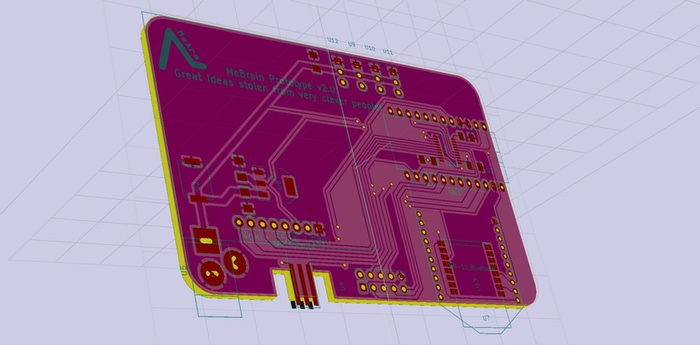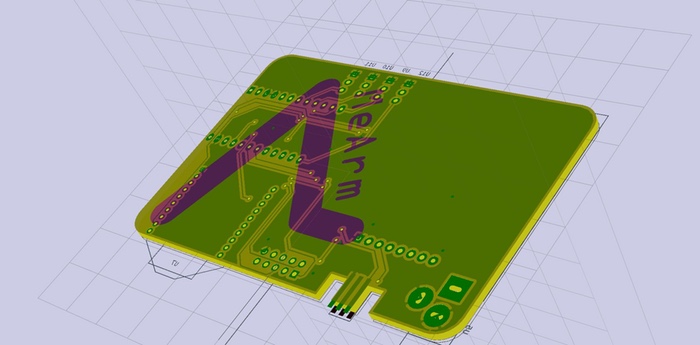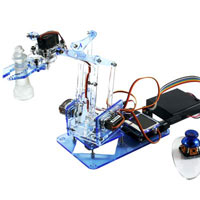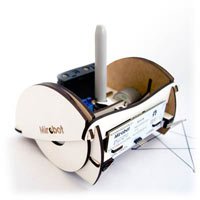The Mirobot Learning Site
I’ve always made a big effort to make sure that the instructions for building Mirobot were clear and the “build” section of the site contains everything you need to be able to get Mirobot up and running. One thing I’ve always struggled with a little is where to put all of the other content like tutorials, lesson plans and challenges that make Mirobot more fun to use.
I just launched the Mirobot Learning Site which makes it a lot easier to create new content to help people use Mirobot in new and interesting ways.
You can filter by skill level and document type to find the content you’re looking for. I’ll be adding to the tutorials on an ongoing basis, but get in touch if you have any good ideas for things you’d like to see up there.
Read moreDistributor Map
Phenoptix.com has been the home of the MeArm since it started life but we’ve started to build a network of excellent distributors who can offer a great deal more than the old phenoptix store can. To make it easier to find where to get a MeArm in your area we’ve put together this map
showing you exactly where you can find a MeArm locally. If you can’t find a local supplier please let us and even better a potential local supplier know!
Read moreKickstarter-based product development
Product development has changed a lot in the last few years. It used to be that bringing a product to market was a massive upfront process that was also quite high risk, but with crowd-funding platforms like Kickstarter springing up this has all changed.

Almost exactly a year ago I launched the pilot version of Mirobot on Kickstarter with the express goal of getting help developing the product so that it was easy for everyone to use, not just the tech-savvy. Over the last year I’ve managed to get nearly 1000 robots into the hands of willing beta testers which has meant that I’ve been able to collect all kinds of feedback on how Mirobot has (and more importantly, hasn’t) worked.
Putting your product into the hands of real users challenges your preconceptions about how it will be used and especially about what people will find easy and hard about using it. But this is the crucial step in ensuring that you’re building the right thing. Fortunately, the big upside of Kickstarter is that I was able to do this with very little financial risk because people have paid in advance.
More and more product companies are turning to Kickstarter as a platform not just for the initial launch and funding of their product, but for future products as well. Take a look at the wildly successful Pebble as an example. Today I launched another Kickstarter, but this time for the finished verison of Mirobot, that has none of the quirks and issues that the pilot version had, is much, much easier to build and a lot more reliable. I’ll do another post on the differences in the new version shortly, but in the meantime, why not head on over to the Kickstarter…
Read moreKickstarter Update - Brains!
Reposting this from the Kickstarter Update. A word to whet the appetite of any good zombie! Today the latest version of the MeBrain or Brains board has been sent for a prototyping run at Ragworm in the UK. It’s totally redesigned in the last few weeks due to a revelation in design from fellow Kickstarter Ben Pirt. Take a look and see if you can see what’s been done.


Did you spot it? Well on the PCB it could well be a lack of it. The bill of materials (BOM) on the PCB has been drastically reduced. It now just contains a voltage regulator, a level shifter, a diode, a resistor and a bunch of decoupling capacitors. “Where have the Brains gone?” I hear you cry – well that’s the clever bit stolen from Ben Pirt. Rather than reinvent the wheel, layout an Arduino Leonardo board again and have all of the parts pick and placed on a custom design I’ve decided to use a plug in solution in the form of the Arduino Pro Micro – or more accurately clones of said board. The final Brains PCB will have an attribution to the original designers of the Pro Micro (the wonderful folk at Sparkfun) as the clone boards never do! And will also carry some other attributions to the clever and wonderful people who have let me steal their ideas whilst bringing the board to life.
It will also be apparent that I’m a little behind on schedule. The process of pulling apart business interests in the MeArm was fairly costly in terms of time (not to mention money) – but the project is again going in the right direction and building some momentum. I’m really happy with the new layout of the board and think that it makes it fit better with the ethos of the original MeArm. In that when a new board is spun out there will be an easy and cheap upgrade path as you can pull off all of the parts from your old board and plug them into the new one, the only tricky soldering being the bluetooth module – but as I’ve selected the popular HM-11 bluetooth low energy module replacing it isn’t likely to break the bank.
Although I’m doing everything I possibly can to deliver on schedule I’m mindful of the words of Shigeru Miyamoto “A delayed game is eventually good; a bad game is bad forever.” I want the MeArm to be a really good game!
Once I’ve worked out Github again I’ll share the KiCad files – so those with some knowledge can point out my errors! Watch this space for updates!
Thanks again for your patience and support.
Ben
Read more

